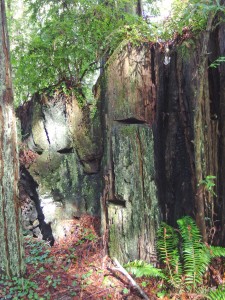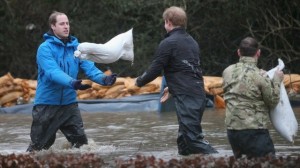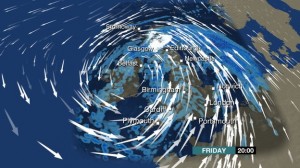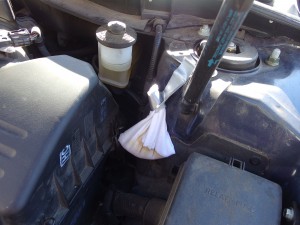Archive for February, 2014
The Standing Still Beings
With enough imagination, any group of two or three lines or dots can become a face. Sunlight filtering through the forest one afternoon this week made me see faces in an old redwood stump I passed as I strolled down the service road to our neighborhood’s pump house in Jack Peters Creek. The “eyes” and “mouth” are actually slots hacked by long ago lumberjacks to cantilever the boards on which they would have stood to saw down the giant tree.
I was drawn to these “faces” because of a recent New Yorker article, “The Intelligent Plant” by Michael Pollan. In it, Pollan notes how wary many scientists are of any hint of parallels between animal senses and plant senses, or of suggestions that plants have intelligence, which he defines as “capable of cognition, communication, information processing, computation, learning, and memory.” Pollan goes on to describe a number of plant studies that do indeed demonstrate such capabilities.
The problem is language. The words we have for intelligence in the animal world (brain, neural networks, etc.) and for the tools of sensory information (ears, eyes, nose, etc.) don’t work for beings whose mode of communication is complex biochemicals: pheromones transmitted by leaves through the air, and electrochemical signals sent by root tips through a network of mycorrhizal fungi. It’s as if we were trying to comprehend and describe the lives of beings on an alien planet.
What I took away from Pollan’s article was a renewed respect for the beauty and complexity of our natural world, and a renewed awareness of how much we humans don’t yet understand. I know the “faces” are just human-made gashes in the trees. But they serve to remind me that I, who have legs to move around, live among the standing still beings, of whose lives I am ignorant.
Down by the Thames
Fifty years later, I’m startled to see the names of English villages I once knew show up on the BBC international news. Huge storms slamming the U.K. have flooded the Thames Valley west of London. I remember Datchet. My husband found his first job there when we moved from New Zealand to England in the early 1960s. On a map this area just west of Heathrow Airport shows more blue than green. The River Thames meanders through, making oxbows and loops. Manmade reservoirs, lakes and channels attempt to contain the water. The map shows the familiar stops on the railway line from London: Wraysbury, Sunnymeade, Datchet, Windsor, where we found a place to live. Today, princes William and Harry are helping to pile thousands of sandbags in Datchet. The weather map shows more floodwater coming.
What I remember most about Datchet is a cricket match. Our first summer in England, and we marveled that the sun did not set until about 10:00 pm. We were exploring the village one evening, and happened on the Datchet Cricket Club. Sunlight was golden across the grass, bathing the white flannels of the players and the trees surrounding the pitch in a romantic glow. Cricket is played in New Zealand, so we knew the game and appreciated its stately pace and formal rituals. The scene has stayed in our minds as the exemplar of the England we imagined when we left New Zealand.
Mousebags
For the third time since we moved to the Mendocino Coast, we’ve had an expensive car repair caused in part by mice chewing on the electrical cables. Time for another garage clean-up, and time to get serious about deterring the little darlings. We hied ourselves down to Mendocino Hardware to check out our options. Mousetraps? No. The field mice have a right to live, just not inside the building. Tony spied a gizmo that emits an ultrasonic squeal, which they’re supposed to not like. I was dubious; ultrasonic stakes installed in the vegetable garden a while back had no effect whatsoever on the gophers and voles. I picked up a can of something called Nature’s Defense. Organic, the label said. I scanned the ingredient list. Garlic, cinnamon, clove, white pepper, rosemary, thyme, peppermint. Hmmm! Interesting combination of smells. We decided it was worth a try.
On opening the can, we discovered that the smelly material was in granules that tended to clump together. The next challenge was how to contain it under the hood. I remembered that when I was a child, a favorite gift to sew for my grandma was a lavender bag. While the clipped lavender dried in the shed, I would rummage through my mother’s box of fabric scraps, drawing pieces of voile and dimity through my fingers, feeling their softness, hearing their colors sing to each other. I would stitch my neatest stitches to make a tiny bag, decorated with fragments of lace and a ribbon to draw in the top.
I figured the mice wouldn’t appreciate dimity and lace. But there was an old undershirt of Tony’s in the rag bag. I pulled out my sewing basket, threaded a needle, and set to work. Memories came flooding back as I sewed.
Filled and tied with string, the little bags are now fastened with duct tape around the engine. The car smells a bit garlicky, especially when we switch on the fan, so we’re trying to remember not to. It’s too early to tell how effective the repellant will be. I’ll let you know in a few months.



